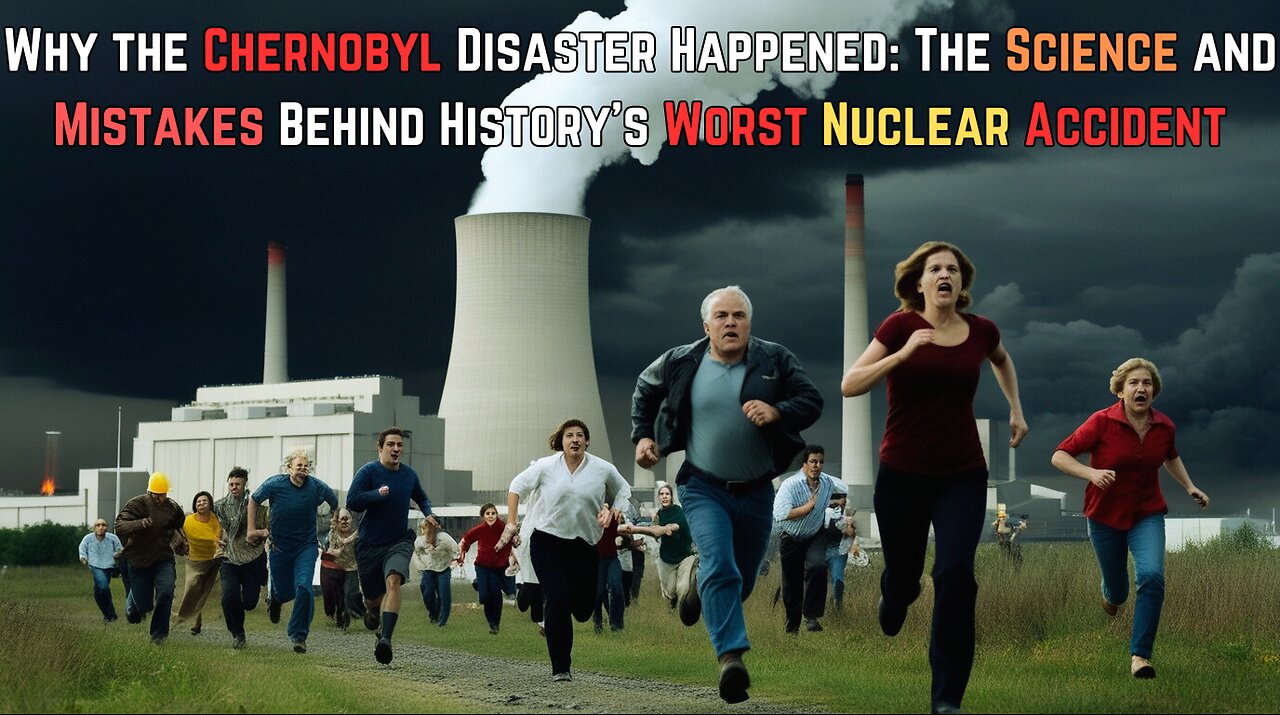Premium Only Content

Chernobyl: The Tragic Flaws That Caused The Disaster
On April 26, 1986, the world witnessed the worst nuclear disaster in history-the explosion of Reactor No. 4 at the Chernobyl Nuclear Power Plant in Pripyat, Ukraine. But what caused this catastrophic event, and could it have been prevented? In this video, we'll unravel the series of events, scientific flaws, and human errors that led to the Chernobyl disaster.
Key topics we'll explore:
The Chain of Events:
A timeline of the fateful night, from the safety test that went wrong to the reactor's explosion.
The immediate aftermath and efforts to contain the radiation.
Technical Failures:
The design flaws of the RBMK reactor and why it was prone to instability.
How a lack of proper safety systems exacerbated the situation.
Human Error and Miscommunication:
Mistakes made by the plant operators during the safety test.
How poor training and pressure to meet deadlines led to critical misjudgments.
The Role of the Soviet System:
How secrecy, bureaucracy, and a flawed safety culture contributed to the disaster.
Delays in admitting the scale of the incident to the world and its long-term consequences.
The Fallout:
The environmental and health impact of the radiation release.
The lasting effects on Pripyat and the surrounding exclusion zone.
Lessons Learned:
How Chernobyl reshaped global nuclear safety protocols.
What modern-day nuclear power plants have done to prevent similar disasters.
This is more than just a story of a nuclear meltdown-it's a sobering look at how small mistakes and systemic issues can lead to catastrophic consequences. Join us to learn the science, history, and human story behind the Chernobyl disaster.
Tags: #ChernobylDisaster #NuclearAccidents #History #ScienceExplained #RBMKReactor #Chernobyl
-
 2:20:09
2:20:09
Tundra Tactical
11 hours ago $2.14 earnedIs Trumps Executive Order A Second Amendment Wishlist???: The Worlds Okayest Gun Live Stream
28.1K1 -
 2:33:51
2:33:51
John Crump Live
16 hours ago $19.75 earnedSaturday Night Main Event!
88.8K8 -
 13:57
13:57
TimcastIRL
22 hours agoTrump NUKES IRS After DOGE Investigation, OVER 9000 Employees To Be FIRED
109K167 -
 13:35
13:35
Russell Brand
15 hours agoPFIZER JUST MADE THEIR NEXT MOVE AND EXPERTS ARE TERRIFIED
131K240 -
 1:15:57
1:15:57
Victor Davis Hanson Show
1 day agoOver Here, Over There: the Russo-Japanese War and Trumpian Peace Policy
61.9K35 -
 23:55
23:55
MYLUNCHBREAK CHANNEL PAGE
1 day agoThe Nephilim Are Here
90.2K82 -
 1:00:58
1:00:58
Break The Cycle w/ Joshua Smith
12 hours ago $1.63 earnedBreak The Cycle Ep. 247: Funny Guys w/ Robbie "The Fire" Bernstein
27.1K1 -
 41:26
41:26
TheTapeLibrary
1 day ago $9.82 earnedThe Disturbing Horrors of the Trans-Allegheny Lunatic Asylum
58.7K6 -
 10:07
10:07
Tundra Tactical
13 hours ago $6.57 earnedTRUMP'S HUGE GUN RIGHTS MOVE!
40K9 -
 1:53:23
1:53:23
Mally_Mouse
13 hours agoSaturday Shenanigans!! - Crowd Control - Content Warning
30K1